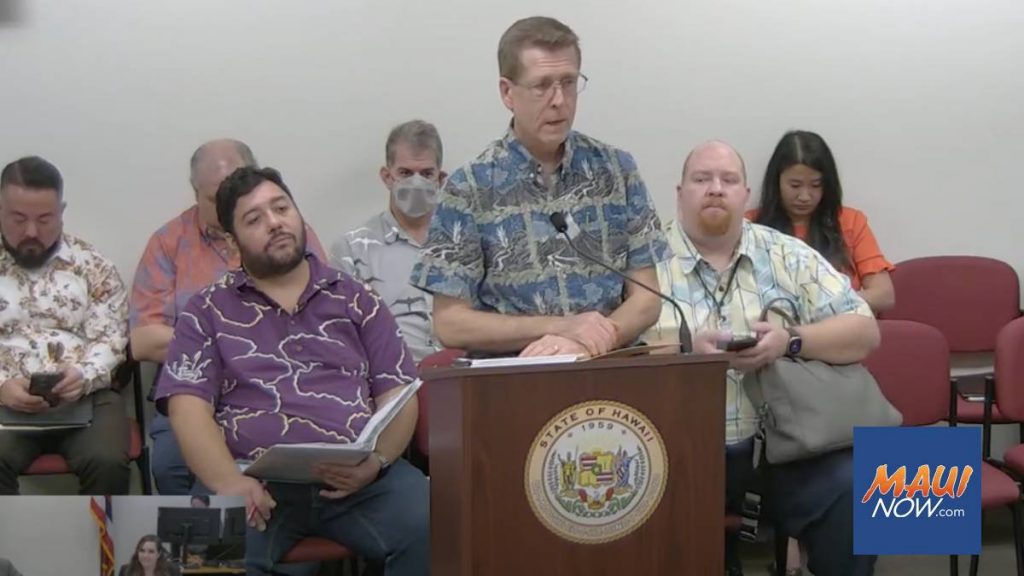Proposed tourism carrying capacity study gets early support from Maui residents

Pointing to Haleakalā National Park, the road to Hāna and other visitor hotspots around Hawaiʻi, residents during a state hearing Thursday backed a plan to study tourism carrying capacity for Maui and other islands.
The proposal would set aside $150,000 for the University of Hawai’i at Mānoa to assess the tourism social carrying capacity for each island. Professor Daniel M. Spencer at UH’s School of Travel Industry Management would lead the study, and a report on findings, along with any proposed legislation, would be due before the start of next year’s regular legislative session.
On Thursday, the state House tourism committee recommended that the measure, HB 1233, be passed with amendments.
About two dozen Hawai’i residents submitted written testimony in strong support for the plan, and highlighted over-tourism’s negative impacts on the environment, quality of life and infrastructure.
Fodor’s Travel recently named Maui one of 10 places on its 2023 “No List” that tourists should think twice about visiting. The advice cited Maui’s water shortages and the disparity between resort uses and restrictions for residents as reasons people should not travel to the Valley Isle this year.
“I support understanding the carrying capacity as the first step in getting control of what is already over-tourism particularly on Maui as reported by Fodor in its recent survey ranking Maui as one of the worst destinations for tourists to come to now… as we all know experiencing the over tourism on our island,” Scott Young, Maui Sustainable Tourism Committee chairperson, said in testimony Thursday.
Bobbie Patnode, who lives on Crater Road in Kula, testified that she’s been affected by the number of people visiting Haleakalā National Park.
“I am also affected along with all other Maui residents when using our county beach parks,” she said, adding that a tourism carrying capacity study would help improve quality of life for residents.
Hawai’i-based ocean conservationist Carissa Cabrera said “popular tourism hotspots” like hikes along the road to Hāna and “Sharks Cove” and Mānoa Falls on O’ahu should be prioritized in the study because they fall outside of state Department of Land and Natural Resources management.
Hawai’i Tourism Authority said understanding capacity limits is an important part of destination management. It added that the plan will likely require more time than the state’s proposed six-month timeline. Also, HTA suggested the state include Molokaʻi and Lanaʻi in the study because “large numbers of visitors are often most pronounced on our less-populated islands.”

HB 1233 referenced United Nations World Tourism Organization when describing over-tourism, which is when “the number of tourists at a destination exceeds this tourism social carrying capacity.”
The measure said that tourism social carrying capacity refers to the maximum number of tourists that can be present at a destination without significantly undermining local residents’ quality of life and tourists’ enjoyment of the destination.
“The legislature further finds that policymakers and tourism managers at popular destinations around the world increasingly are seeking estimates of tourism social carrying capacity to allow action to be taken to control visitation before over-tourism occurs,” the proposal said.
The measure seeks to consider the tourism social carrying capacity as perceived by both Hawai’i residents and visitors. Researchers would also consult with the state Department of Health to assess how each island’s health system is affected and consult with the state DLNR to find out how state parks and hiking trails are impacted, among other focus points.
In 2019, Hawai’i saw a historic high of more than 10 million visitor arrivals, with 3 million landing in Maui County. Visitor arrivals remained strong into early 2020 before travel was shut down in March that year due to the pandemic.
Tourism reopened in October 2020 and rebounded faster than economists expected, with visitor numbers hitting pre-pandemic levels last year.
Since reopening, people across the state have increased calls for better tourism management. Maui residents have testified at many Maui County Council meetings about the negative impacts of over-tourism on limited natural resources, on infrastructure and on quality of life.










